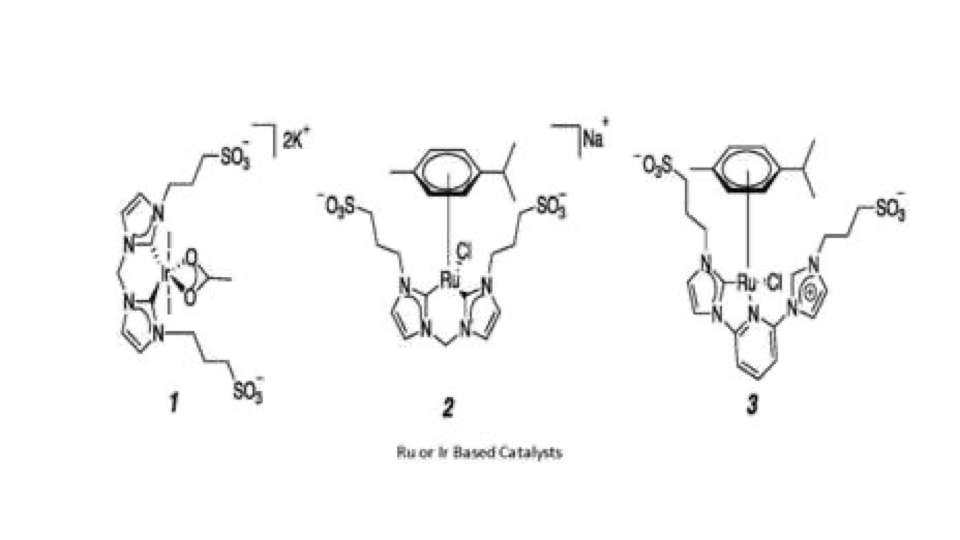To simultaneously transform CO2 and glycerol, two low-value by-products, into formate and lactate can be highly economically attractive. Presently, however, it is challenging to achieve the reaction on an industrial scale.
GW researchers developed novel single-site supported heterogeneous catalysts that can simultaneously convert CO2 and glycerol into formate and lactate under batch or continuous flow conditions. The novel single-site supported heterogeneous catalysts consist of Ir or Ru N-heterocyclic carbene (NHC) that are functionalized with sulfonates. In addition, synthetic hydrotalcite can be used as a non-inert supporting structure to these Ir or Ru based catalysts.
To date, GW researchers are the first to convert CO2 into formate under a CO2–glycerol continuously flow system. Compared with previous processes, this new discovery generates less low-value by-products and has a higher activity. Initial research results are promising for scale-up synthesis competitive with existing industrial productions of formate and lactate.

Applications:
- Simultaneously covert CO2 and glycerol into high value formate and lactate
Advantages:
- Simultaneously conversion
- First to achieve CO2 transfer hydrogenation in a gas-liquid flow system
- High potential for industrial-scale continuous process
- Occurs at a lower temperature and pressure than previous processes, thus safer and more economical
- Reduce greenhouse emissions
Publication:
-
Transfer Hydrogenation from Glycerol: Activity and Recyclability of Iridium and Ruthenium Sulfonate-Functionalized N-Heterocyclic Carbene Catalysts
Arturo Azua, Matthew Finn, Hannah Yi, Ana Beatriz Dantas, and Adelina Voutchkova-Kostal
ACS Sustainable Chemistry & Engineering 2017 5 (5), 3963-3972. DOI: 10.1021/acssuschemeng.6b03156